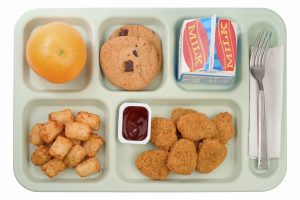By Karli Johnn
You’re at your local diner having lunch with a large group of friends. You all order sodas. When they arrive at your table, your waitress takes a whole handful of plastic straws out of her waist apron and leaves them on the table with your drinks.
No one thinks anything of this. Some of you reach for a straw to slurp your drink with. Others simply drink it out of the cup. But no matter if you put that straw in your soda or leave it sitting on the table, these straws will all end up in the same place. The garbage.
In fact, half a billion plastic straws are thrown out every DAY in the United States alone, according to the National Park Services. This is enough to circle the entire earth twice.
Sure, straws are only 19.5cm, but those 19.5cm add up. Based on the fact that half a billion straws are thrown out every day, the average American uses 35,000 straws in their lifetime. This means that you alone contribute to over 20,000 feet of waste in straws alone. That’s more than 4 miles of straight plastic you leave on this earth when you’re gone.
Plastic straws are not recyclable and non-biodegradable. Because of these two simple facts, they contribute to many major issues our environment has.
Plastic straws are the sixth most common type of litter, according to the established app Litterati, which identifies and maps trash. When straws are automatically provided by eateries, many people thoughtlessly throw them on the on the ground without using them.
Even if you properly throw away your straws, they still end up in massive landfills that are harming the environment in many ways. These huge dumps of garbage are rapidly being filled beyond their capacity because of non-biodegradable materials like plastic. Overfilled landfills cause pollution in the air, groundwater, and soil. Straws are adding to this growing issue.
Straws also contribute to the colossal problem of plastic pollution: eight million tons of plastic are dumped into the oceans every year. Plastic bags, toys, and clothes made from synthetic fibers are a few of the types of trash that inhabit the oceans. A mass of plastic larger than Mexico was found in the middle of the Pacific Ocean, according to National Geographic. Straws are especially harmful because not only do they pollute the oceans, but they endanger our animals as well. Marine animals become entangled in plastic, and because of the small size of the straws, they are often consumed by fish. In fact, a video of scientists removing a straw from a sea turtle’s nose went viral in 2015.
Can you believe something as little as as a straw can cause this much damage to the environment? But you can take action. Simply say, “Hold the straw, please,” when ordering a beverage. You can easily drink out of a cup rather than sipping out of a straw. Remember — 35,000 straws are used in an average American’s lifetime. You can dramatically cut down on the number of straws left on this earth if you limit your own usage. There are also many additional ways you can help!
Stop using disposable straws at home. A simple solution you can take into your own hands. While you can’t dictate restaurants or other people’s straw usage, you can certainly ban them in your own home.
Reusable straws are also available! Straws made of stainless steel, bamboo, copper, or glass are great alternatives to plastic. These straws are reusable and sustainable for the environment. Make a statement by bringing your own straw with you to restaurants. This eliminates your own straw usage and will most likely strike up a conversation, all the while spreading awareness and inspiring others to decrease their straw usage as well.
Encourage restaurants to stop using plastic straws. Many eateries across America are being proactive by making straws an option. Instead of automatically giving straws out to customers, they are simply asking patrons if they would like them. Believe it or not, given the choice, most people politely refuse the straw. Many restaurants are now switching to other alternatives such as paper straws.
The future may have seemed bleak at first with our issues of pollution and litter leading back to the seemingly normal straw. However, there is actually a lot of hope. People are beginning to take environmental precautions seriously and realize that their actions matter. If we take a stand, we will be able to get rid of our issues once and for all.
Slurp on this: in learning to take action within our environment by getting rid of the straw, we are are working together as individuals to unite and improve the world for generations to come.
This essay was one of three winning submissions to an op-ed writing contest in Ms. Bodnar’s 8th grade honor’s science class.





Be First to Comment